Touring Round Australia
Austin 12/4 tourer in 1926
Please note: If you can have a large scale map of Australia to hand it would greatly add to the interest of this story, or alternatively an on-line map such as http://maps.google.com.au/
Austin motor cars have never been afraid to take their owners on long, and sometimes hazardous journeys. We only have to look at the exploits of the late John Coleman who drove his little Austin Seven from Buenos Aires in Argentina right up to New York. Then of course there was Miss Gladys De Havilland who drove her Austin Seven across the World to New Zealand. ‘Mugwump’, the 1930 Austin 16/6 Burnham, driven by students from Bristol University all the way to Johannesburg in the early 1960’s, and then driven back again by South African students, and of course not forgetting the numerous pensioned-off Austin 12/4 Taxicabs in the 1950’s, again mostly driven by students, to all manner of unlikely destinations across the World – and after clocking up thousand’s of miles plying for hire around the streets of London.
Back in the early 1920’s there was a craze (if we can call it that) to drive a motorcar around Australia – a distance of approximately 10,000 miles, and when you consider what the roads must have been like – if indeed there were any in some places, this too must rank amongst the craziest of trials of endurance for man and his motorcar.
Several intrepid motorists set out to attempt this tour during the early 1920’s, One such pair being a Mr. Jack Dorney who, with his newly married wife, completed their honeymoon tour in an Overland Whippet they, being the first, set the stage for others to follow. In 1925 Messrs Woodward and Mayor completed the same journey, only to advise all and sundry on their return that they were all set to undertake the very same trip again.
However our story concerns Wilfred (Fred) and Ellen Anderson who, after completing a tour of Southern Australia in 1925, decided to Circumnavigate the entire continent in an anti-clockwise direction the following year. Both journeys being undertaken in an Austin 12/4 motorcar. – of course.!
The Sydney Morning Herald 1926
Mr. & Mrs. Wilfred Anderson, of Wagga, recently completed a motor trip round Australia. They left Wagga in an Austin car on August 31st for Sydney, and travelled thence to Brisbane, Roma, Longreach, Cloncurry and through the Northern Territory to Western Australia. After leaving Perth they visited Coolgardie, Balladonia and Eucla, traversed the desert to Fowler’s Bay and passing through Port Augusta, Mt. Gambier and Melbourne, returned to Wagga. The car was fitted with collapsible beds, cooking utensils and a table. Mr. Anderson said that the stories of hardships suffered by round-Australia tourists were considerably exaggerated. Mr. Anderson left for Sydney this morning.
Thus the Anderson’s epic tour of Australia was reported in the Sydney Morning Herald shortly after their return from their second tour of Australia in their new Austin 12/4 tourer.
The tour, as reported above, started off from their home in Wagga Wagga in New South Wales on August 31st 1926 but they actually commenced their journey on September 22nd eventually arriving back three months later on December 22nd. Their journey took them into Queensland, across the Northern Territory, down into Western Australia, across South Australia and back into New South Wales, but our story is actually in two parts and commences with the ‘trial’ run across South Australia in 1925.
Wilfred Anderson and his wife Ellen decided to undertake the tour around Australia in 1926 in a Holden bodied Austin 12/4 open tourer – which was described in a newspaper report as an ‘Empire’ model. The Anderson’s, the report went on to say, “Were not young people like the Dorneys, having both reached middle age”. “In 1925 they had motored from Wagga Wagga in New South Wales to Perth and back, a distance of around 4,500 miles, and were so charmed by the nomadic life they endured that they were determined to make an even longer trip – right around Australia the following year, and considered that the Austin 12/4 was rugged enough to withstand any rough roads which they were likely to encounter”.
___________________
Wilfred Anderson was no stranger to the care and maintenance of the motorcar as he ran a garage in his home town of Wagga Wagga, so it should be assumed that he knew exactly what his Austin was capable of and able to fix any problems which might occur during the journey.
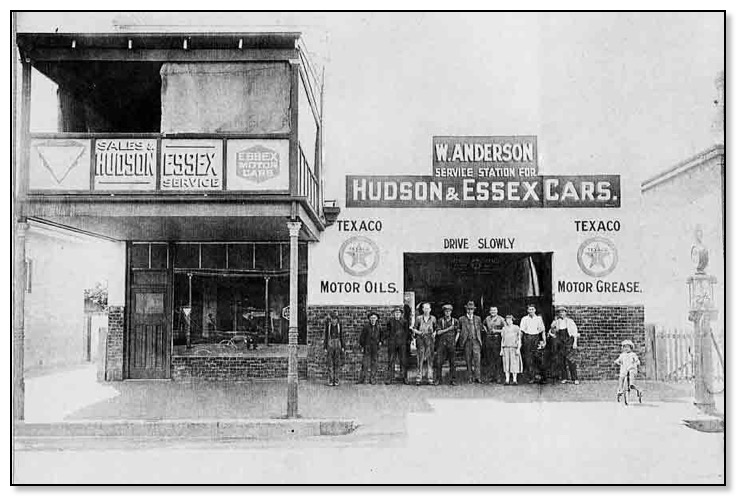
The garage, as you can see from the photograph sold mostly American motorcars, such as Hudsons, Essex and Dodge, and it was the last of these that actually helped to pay for their tour, for not long before they were due to set off, Wilfred received a letter from America advising him that he had won a trip to the U.S.A, as a reward for selling an outstanding number of Dodge motorcars. Wilfred replied that he did not wish to travel over to America, as he had still much to see of his own country – Australia, and asked whether it would be possible to have the monetary value of the prize instead. The company agreed to his request and provided the financial means to undertake the tour. Perhaps they may not have been so keen to do so had they known the intention was to use an Austin!
Unlike other motor cars which had attempted this tour, the Austin, which was described as a sturdy British-made four cylinder motorcar, had not been strengthened in any way, the springs on the Anderson’s Austin, for example, were ‘as fitted’ at the factory and even the Smith’s shock absorbers, were, we are told, standard too.
In their drive to Perth and back in 1925 the Austin gave absolutely no ‘significant’ trouble, and the springs, having been adequately tested on this trip were considered to be more than capable to cope with the worst road conditions which they may encounter on their round Australia adventure. However, having said that, the Austin was all but written-off on the very last leg of their journey – but, through no fault of the car itself.
From a newspaper cutting published prior to their round Australia journey in 1926, the writer commented that: “Admirers of the British car will watch with interest the progress of this car, because it will be one of the severest ordeals to which a British car has been subjected in this country”.
The report then went on to comment on the various preparations which had been made for this journey and the addition of home comforts with which to sustain them throughout their adventure: “Mr Anderson has exercised great ingenuity in preparing the car for the journey. It has a large petrol carrying capacity for the long stretches between fuel supply stations, a large water tank, camping-out body, and accommodation for the large amount of luggage necessary on such a trip. The luggage includes folding chairs and a table, a cooking stove, shotgun, tarpaulins for shelter, and digging implements in case of an accident. A ‘pull-u-out’ winch is fitted to the front cross member as an added precaution against being stranded. On one running board is a cosy kennel, in which their mascot, a dog which answers to the name of ‘Kerry’ is comfortably housed”.
The report also mentioned that Wilfred Anderson had been in touch with Jack Dorney who lived in Brisbane, and from whom he was able to gain a considerable amount of useful information about his forthcoming trip, not only on the road conditions but also on the type of weather he was likely to encounter in the various regions through which they were about to travel. Especially in the dreary north-west, where he was advised to avoid the wet season between late November and December when heavy rains usually sweep across that region with many areas becoming severely flooded.
The ‘anti-clockwise’ route chosen for this adventure was to head West via Toowoomba to Roma, then head North to Blackall, Winton, Comooweal, Newcastle Waters and Katherine onto to Darwin. From Darwin they will proceed via Derby and Broome and then go across to Perth and back to Wagga Wagga via Port Augusta, Adelaide and Melbourne.
Jack Dorney was able to secure the services of the Vacuum Oil Company in ensuring that there was always a supply of oil and petrol at various points on the route for his trip. Wilfred was also fortunate in this respect, and was assured that supplies of Plume Motor Spirit and Mobiloil ‘Gargoyle’ oil would be available in readiness at various depots if and when required.
1925: The First tour of Southern Australia - Perth and Back
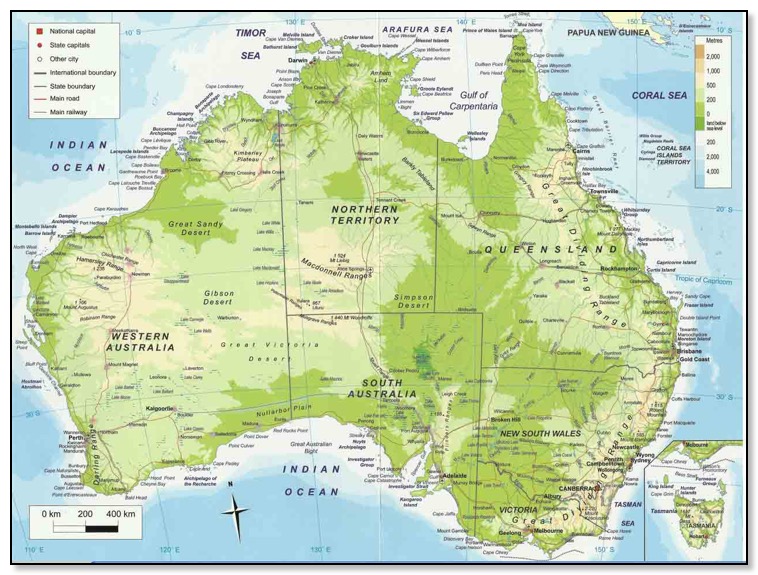
The Anderson’s set out on their first, shorter ‘clockwise’ trip around the southern coast of Australia on Sunday 4th October 1925, Keeping them company, but driving a Buick, was Wilfred’s brother Harry, his wife Florrie and their two children Freddie and Jean – who was known as ‘Titch’.
The following is an account of that trip which has been re-constructed from the diary entries recorded by Wilfred’s Wife, Ellen, who made meticulous notes of their journey, adding ‘interesting’ comments on the places they visited and the people whom they encountered en-route.
New South Wales & Victoria:
The journey started off as planned, travelling during the day, stopping off to set camp for the night and to do a spot of fishing for their meals, which according to the amount caught, certainly in the early days of the tour, appeared to represent their basic diet for all meals including breakfast.
Their first encounter with poor weather conditions was at the Victorian border town of Orbost, where during the night the wind reached gale force. “It was raining like fury” Ellen also recorded Orbost as being a very beautiful area with many exotic birds. It was here that the Buick appeared to develop a very ‘funny’ squeak, but on investigation they found that the noise was coming, not from the car, but from the birds. With rain pouring down, they proceeded to a place called Marlo which was 10 miles off the main road and running alongside the Snowy River for the entire 10 miles. Here the car slipped and slid all over the now saturated road, resulting at one point in the car turning a full circle and ending up an embankment facing the river, stopping just in time to prevent the car from sliding into it. Ellen recorded in her diary that she “became very frightened, the night was pitch black and it was raining like fury, I was very glad when the journey ended”
Wilfred and Harry wearing oilskins, managed to erect the tents in the pouring rain, whilst the women and children kept dry by staying in their cars. Their comment regarding Marlo, was “there was nothing worth seeing there, it being a bit of a one-horse town”.
They awoke the following morning to bright sunshine, and declared that now, “everything in the garden was lovely”. After breaking camp they motored on to Tahmoor, on Lake Entrance where they stopped for dinner. Here they walked down to the head of the lake and waded through to the other side and across to Ninety Mile Beach – which was recorded as ‘a fine sight’. However the lake was full of crabs and Florrie, who waded across without shoes found that several crabs had attached themselves to her toes and nipped her badly.
After breaking camp they headed off towards Melbourne via Berwick where they camped for the night. The next morning they drove into Melbourne and garaged the cars at a garage called ‘Village Bell’, then took a taxi from there to the Victoria Coffee Palace, where, after a meal, went to see the play ‘No No Nanette’ – which apparently they didn’t think much of! After visiting Melbourne they continued on to Geelong and camped 20 miles out, with the wind now blowing a gale.
The following day they went on to Camperdown and continued on to within a mile of Warnabool where they camped near the beach for the night.
Ellen commented in her diary that “the country all the way is very pretty and all under cultivation, with no reserves or timber about since leaving Melbourne”. It was at this time that Wilfred thought it would be funny to smoke a cigar, which unfortunately made him sick and feel very unwell. Ellen did little to help in this situation by singing; ‘Freddy and his Wild Woodbine” (tobacco) – which was certainly not appreciated. They motored into Warnabool then drove on to within 4 miles of Heywood. It was here that Wilfred ground in a new valve to replace one which had burnt out, and also took the opportunity to repair the sun visor which had blown off in the wind. Rain was again causing minor problems, but the intrepid adventurers were quite relaxed about this aspect of the journey, as, by the time they reached Meningie, they now had a plague of Mosquitoes to contend with.
Into South Australia:
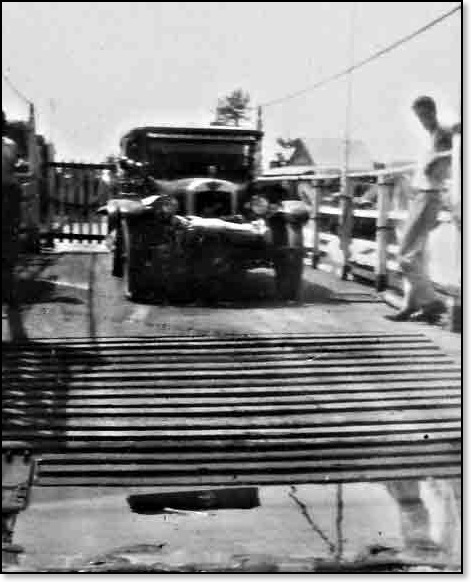
Saturday October 24th. After a night’s sleep, they continued on to Wellington – which they considered to be “a one horse town”, and where they had to cross the Murray River in a punt which cost them 2/8d. for the fare. They were then able to continue onto Adelaide via Strathalbyn which they thought to be “a very pretty little town”. They spent that night camped out on Semaphore Beach at Port Adelaide.
When in Adelaide, they made enquiries regarding the road conditions out to the west, but no one whom they asked seemed to know anything about them, so they decided to drive onto Port Augusta and try there. At this point Wilfred’s Brother Harry decided that he had had enough and so he and his family left Wilfred and Ellen to continue with their tour alone, and headed back to Melbourne, just 24 days into the trip.
Unfazed by Harry’s desertion, Wilfred and Ellen pressed on, and after leaving Adelaide, drove just 5 miles into Gawler where they camped the night. The following day they headed off to Roseworthy, Farlee, Riverston and Auburn, where they observed that the harvest was in full swing. This lead them into Watervale where they viewed an ancient church. From there they went on through Clare, Brinkworth and Krolunga which they noted was a great grape growing area.
On Friday 30th October they drove onto Warmertown and onto Port Pirie which turned out to be quite a fair-sized shipping town. They then continued on to Port Germein which Ellen described as “a God forsaken place”. However they did stop to do some fishing and were rewarded with 3 fish and a crab.
Another valve required grinding in before continuing on to Port Augusta – which Ellen described as “a hot, dry, dismal hole of a place”. Here they had to put the Austin on a punt which was towed by a small motor boat across the Gulf to Post Augusta West.
Still concerned about the condition of the roads they went to the largest garage in the town, and also the police station, but could still not obtain any useful information. They also went to the Railway Station and spoke to the Station Master, who they understood had worked on the Transcontinental Railway since the line was first built, and he advised that because it was all desert it would be quite impossible to find their way across it. (even in an Austin Twelve), So they decided to leave the Austin at Port Augusta West, and camped out in the Bush for the night, during which they endured a terrible storm which raged all through the night.
Having weathered the storm they decided to leave the car where it was and took the Transcontinental train to Perth which left at 9.pm on Sunday 1st November.
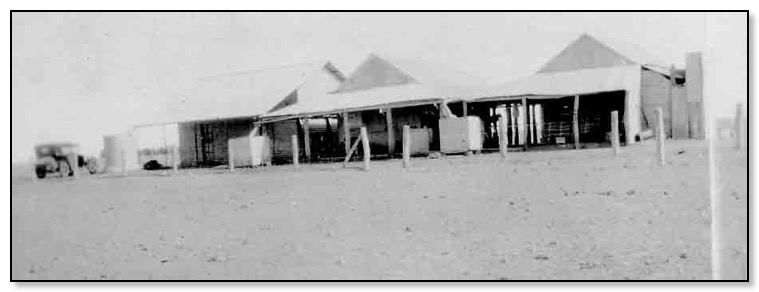
The Police Station at Augusta West
In her diary, Ellen reported that “there was very little to see except plains, salt bush and sand” and recorded that “this was a dreadful country”, however she also commented that the train was very nice to travel on. It was also noted that there were no railway stations along the line, so if you wanted to leave the train you had to climb down some steps in order to reach the ground. They broke their journey at Kalgoolie during the afternoon of November 3rd and decided to have a look around. Here they did a spot of sightseeing which took them to the Perseverance Mine where gold was first found in Australia by a man Patrick Hannan.
On Sunday 8th November they took the tram into Neadlands which was a pleasant ride along the Swan River. In the evening they went to hear the band play and Ellen recorded that she did not think the band was as good as the Wagga Band, and besides she did not care for the selection of music they were playing.
The following day they did a spot of sight-seeing around Perth and met up with a Mr. Armstrong who had recently travelled West to East across Australia, and were able to obtain a few tips from him regarding the road across the desert. He also described in some detail stories of the desert crossing, which so impressed the Anderson’s that they decided to return to Port Augusta for their car.
On Tuesday 10th November they left Perth in the Transcontinental train for Port Augusta arriving 3 days later. The Austin, retrieved from the garage, was prepared for the long journey ahead and stocked up with supplies. On leaving Port Augusta they headed for Cowell but decided to make a detour to miss the Yardee Sands which they had heard were ‘very bad’. They continued onto Cleve and Rudat where they camped the night.
They commenced their journey on Sunday 15th November and promptly ran over three snakes, they also encountered a very large kangaroo whilst on the road to Lock, which they reported was very rough and sandy. The weather, it was recorded “was dreadfully hot”. They arrived at Ellinstone at around 6pm, and drove on a further 20 miles where they set up camp.
The following day they continued on towards Streaky Bay, a very pretty bay, but a very poor town which depended on shipping and motor mail for its existence. From there they motored on to Murat Bay which they reached at around 6pm amidst a very heavy thunder storm. They parked up and remained in the car until the storm cleared, then drove on a further couple of miles to set up camp. It continued to rain on and off during the night, but the storm had cooled the air considerably.
Their next port of call was Thevenard, where fibro cement roads and Plaster of Paris was made.
(This jetty, built in 1920 was the first concrete jetty in South Australia).
The Anderson’s recalled that the factory was very large and had its own pier to accommodate the boats which transported their goods on to Sydney. They also commented that they “were able to catch a nice lot of fish from the pier”.
Fowler’s Bay, which was their next destination was described non too flatteringly as a “one horse town”, where the roads ended at the border of Western Australia, leading to only rough tracks from then onwards. However they continued their journey and went through Whitewells Station, which was described as a shanty of a place inhabited by a single white man, the others being local natives. They spent the night at Nullabor – a very lonely place on the plains.
Into Western Australia:
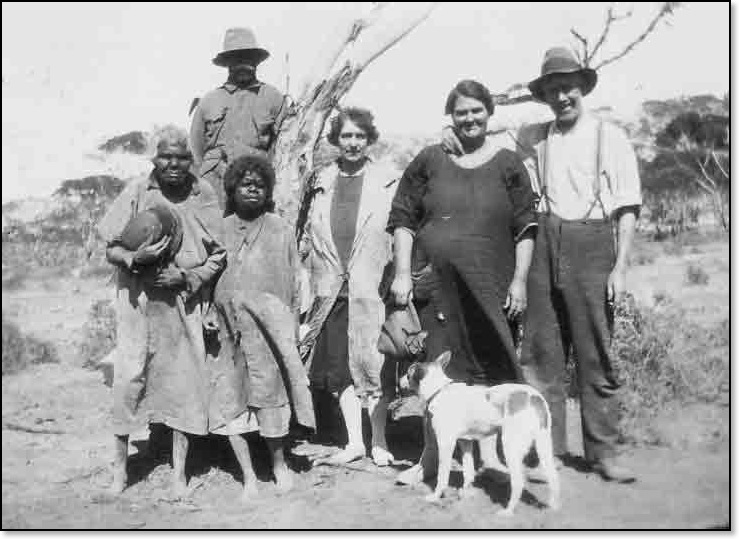
Ellen with Aboriginals
The diary entry for Thursday 19th November reads: “Left Nullabor at 11,30. On the road we came across wombat burrows. Fred shot two of them, they are like bears to look at and are supposed to be good to eat. We had sport with two kangaroos, my word they can go some, beat us in the end. We passed two camel teams loaded with wool. We met a linesman doing his rounds, a very funny sight to see him travelling in a buggy and a pair of camels. From there we went on to Eucla where we camped for the night”. They had a quiet day at Eucla and went out on a turkey hunt, but were not able to catch any, but they did manage to shoot a very large snake. They also played their phonograph to the Aborigines, and thought it very amusing to see their reactions which ranged from being ‘concerned’ to ‘laughing’ with amusement – “They thought it was a mystery boss”. Ellen added further to their amusement by giving one gin (a name by which aborigine women were referred to), a hat and a coat – she was apparently so pleased with her gifts that she danced and sang in appreciation.
They left Eucla with some freshly baked bread, as they were unlikely to encounter any shops on the road where food could be purchased. They then continued on to Mundrabilla Station, which was owned by a Mrs. Ross Watson, a widow with three little children and were the only white people in the place. After having lunch there they left for Madura, which at that time was enjoying a long spell of very hot dry weather, their average rainfall being just 5 inches per year, an average which had not been reached for 3 years.
Madura Station consisted of a single hut which was occupied by Mr. Gourdan the owner, all the other inhabitants being Aborigines, At Madura they had a very fine mineral bore, where the Andersons were able to have a hot bath and a swim. However in getting out of the bath Ellen slipped on the slippery ground and broke one of her toes.
Before they left Madura for Balladonia, Mr. Gourdan killed a beast for them so that they would have some fresh meat when back on the road, as the Stations were hundreds of miles apart.
On route to Balladonia the Anderson’s had to drive the Austin up a very rough gorge where they had to avoid some very big boulders. There really was no road to speak of, and they discovered that the last car to go up the gorge had to be towed up with camels. The rough track and stones caused two of the tyres to puncture, which had to be repaired before they could continue, but 30 miles further on Wilfred shot three fairly large wild turkeys.
By Monday 23rd November the Anderson’s had reached Balladonia, after driving across country, through grass as high as the car, looking for tracks from car or horse, and getting lost into the bargain. But with the aid of their compass their route was finally worked out and they arrived there safely. On the journey they met a linesman who was working over a hundred miles from home in a place called Byre near Isralite Bay. They shared some of their fresh meat with him which was greatly appreciated, as supplies only arrived by boat every 3 months. Their arrival at Balladonia was aided by simply following the telegraph wires.
Balladonia was yet another ‘Station’ run by two bachelors, a Mr. Ponton and a Mr. Mason. All the other inhabitants were Aborigines.
From Balladonia they drove on to Cook’s Station where they stayed the night, leaving the following day to Frazers Range where they encountered some very bad road surfaces. They stopped for lunch at the Range and then continued on to Norseman which they reached at 6pm. – The first town for 900 miles, and were very pleased with their achievement.
The date is now Thursday 26th November, and after breaking camp they pressed on through enormous salt lakes, observing the amazing mirages on the Ary Lake. En-route they encountered two donkey teams where they were amused to see a small donkey pulling such big wagons. There were 30 donkeys in one team and 25 in the other.
The roads were very bad from Norseman to Coolgardie. and when they arrived there they took the opportunity to post letters which they had collected from various people whom they had met on the road. Coolgardie, was at one time a very prosperous mining town, but had almost become derelict since mining operations had ceased. They continued on for a further 15 miles where they camped for the night.
The Anderson’s continued their epic journey on towards Southern Cross – another mining town, where they were experimenting on wheat growing. Ellen commented in her diary that the crop they saw did not look up to much.
By Saturday 28th November they had arrived at the Slocum’s place at Wild Catchem. Where they were made very welcome, staying there until Tuesday 1st December.
They continued their journey to Perth where they arrived at 6pm, and decided to garage the Austin for the night. The following day they went sight-seeing around the beaches of Freemantle and Cottasloe, then went sight-seeing in Perth itself.
A week later they loaded the Austin on board a boat bound for Melbourne which took them seven days to reach. The Austin was off loaded after a pleasant trip and they stayed the night with friends.
They left Melbourne on Sunday the 13th December at 10am, and reported that the roads to Seymour were particularly bad. They got to within 2 miles of Benalla when the steering arm broke and the car got out of control. They dived off the road, over a large heap of stones and headed straight for a tree, but by some miracle the stones must have bumped the wheel and forced the car away from the tree and down into a culvert. Ellen recorded in her diary that she “took a firm grip and closed her eyes thinking that the end had come”, but at that very moment they came to a standstill with the front wheels up a bank and the rear wheels at the bottom of the culvert. “It was a wonder”, she records, “that the car did not turn over”. On examination it was found that a rock had gone through the tyres, and that the chassis had been broken in half.
Undaunted, they decided to stop there the night and dig a trench in the morning to get the car out.
Being an Austin Twelve it was not surprising that even after such a bad accident, the Anderson’s were still able to continue for a further 1½ miles to Benalla where they were able to find a garage which would carry out temporary repairs to enable them to get home.
They left Benalla on Tuesday morning after the repairs had been carried out, and by the afternoon they arrived home safe and sound. Ellen recorded in her diary: “All’s well that ends well!!”
And so ended the first tour which encompassed much of the coastal area of Southern Australia.
1926: The Second Tour - anticlockwise round the entire continent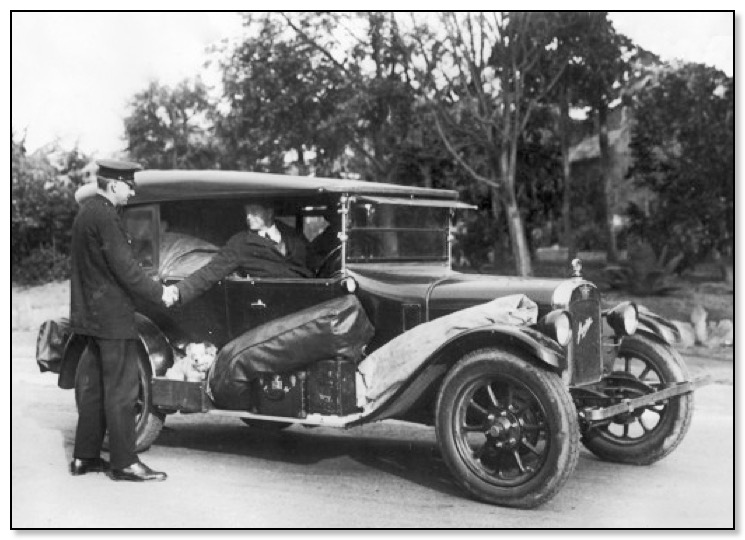
(Photograph: Jennie Hanson)
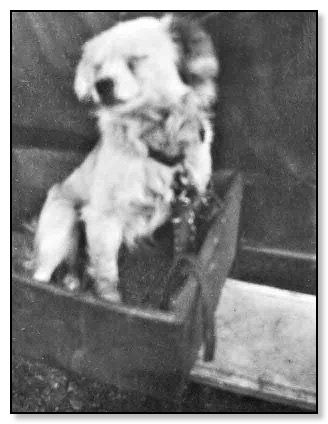
Kerry
Prepared and ready to go, John Lanaghan wishing Wilfred and Ellen Anderson a safe journey around Australia in the Austin Twelve-Four. Note ‘Kerry’ the dog in his kennel on the running board. Kelly however did not make the entire journey as he later died from a snake bite.
You would have thought that after such a trip the Anderson’s had satisfied their sense of adventure and were now prepared to settle down to a rather more sedentary life, but sadly you would be quite wrong if you though that, as the following year on the 22nd September they set off again for yet another tour of Australia in their Austin Twelve-Four, only this time taking an anticlockwise route around the whole of the continent.
Ellen’s diary entries were less ‘dramatic’ on this occasion and there were gaps where nothing of any note was found to be worth recording, and regrettably very few photographs of places or people have survived. However, the event was recorded in the ‘Austin Magazine’ of July 1928.
The Anderson’s departed from Wagga Wagga for Sydney on August 31st 1926, the Austin Twelve, a new one, was well equipped and provisioned for their long and arduous journey around Australia. They eventually left Sydney on Thursday 22nd September and headed North to Ravensworth after spending the night with a friend at Wiseman’s Ferry. Next morning they carried on to Tamworth where again they stopped for the night.
By the Tuesday they had arrived at Spicer’s Gap where they got held up on account of the rain, and apparently had had a difficult time in getting there. The rain continued for some considerable time and they were held up in the mountains because of it, Ellen recorded in her diary that “the roads were deplorable, the soil was black and the tucker getting low”. Whilst holed up, they recorded that “a single-seater car came along and tried to get up the mountain, but in doing so it slipped down the side and into a hole”.
By Friday they had not progressed any further and were awaiting a team of bullocks which eventually towed them, and other vehicles including a lorry up the mountain. They arrived at Red Bank where, in spite of the torrential rain they were able to make camp there for the night.
Into Queensland:
The following day they eventually broke camp and moved on towards Brisbane, where they arrived around lunchtime. They were disappointed to note that all the shops were closed as it was half-day closing. They motored on to Glenna which was South of Brisbane and stayed with friends for dinner. In the afternoon there was a very heavy storm which prevented them from leaving as planned. As it was they did not leave until midnight and then they did so in the rain.
By the Monday 3rd October the weather had improved and they were able to do some shopping and spend some time with the Downey’s where they were able to gain some useful information on what they could expect on the next leg of their journey. They stayed for dinner and later were shown the pictures which the Dorney’s had taken of their journey around Australia during their honeymoon.
By Wednesday Ellen recorded that she “had done her washing and ironing and was feeling tired”. The following day was spent doing some more shopping, getting things necessary for the trip, and stayed a further night before setting off. On the Friday they were asked to pose for photographs for inclusion in the Brisbane Daily Mail, and were interviewed by the editor Mr. Elkinson.
They left Brisbane about noon on the Saturday and proceeded on towards Ipswich, and were blessed with good roads, however they had to take the road through Lowood, which Ellen recorded “was the most dreadful road she had ever travelled on”. Eighteen miles out from Towoomba they pitched camp and spent the night.
After leaving Towoomba and arriving at Chinchilli they took the wrong road, and had to return to Chinchilli after travelling 21 miles, and start again. This time, taking the correct route they eventually made it to Goombi which was, in their words “a small railway siding”, where they spent the night.
On the Monday 10th October they left for Roma where they arrived at 4 pm, had a good look round and met up with some friends where they were able to load up with water and have a cup of tea. They later drove out to the bore which they lit up especially for the Anderson’s and were told that the light from the bore could be seen some 12 to 14 miles away.
Ellen recorded very little over the next few days other than leaving one place and arriving at another until Sunday 16th October when they arrived at Cloncurry where Fred needed to remove the gearbox, stripped out the gears, and fix them. We are not told why this had to be done or to what extent the gears needed fixing, but they stayed there until the Monday in temperatures of 120 degrees of very dry heat before obtaining a few provisions and continuing on to Devonport where they had a parcel to deliver. Whilst at Devonport they visited the Molvern Hotel to inspect specimens of the minerals which had been excavated from nearby.
The next port of call was Duchess, and then on to Dejarra, which Ellen described as “a town consisting of three tin shacks”. Here they were able to re-fill the car with enough petrol to take them a further 900 miles. They pitched camp some 24 miles out of Dejarra and it was here that Kerry, their dog, got loose during the night and was bitten by a snake. At first the Andersons could not understand why the dog appeared to be ill, and by the time they discovered the cause, it was too late to do anything to save him. Kerry died about 6 am the following morning.
The loss of Kerry left a deep void in their lives and the Andersons were upset to the extent that they could not bring themselves to eat for the rest of the day. He was great company and they felt a great loss at his passing.
After experiencing some trouble with the starter motor they were able to press on towards Camooweal and Rankin where they camped the night.
The Northern Territories:
Their next stop was at Alexandria, Brunell Downs and Anthony Lagoon where they stayed the night with Mr. Mc.Cann the Policeman, and who killed a goat for them so they could have fresh meat for breakfast. On leaving Anthony Lagoon they went on to Newcastle Waters where they camped the night, here, Ellen records there were hundreds of Aborigines – many of whom were naked!
On Sunday 23rd October they motored on to Daily Waters and camped at the No.3 bore. They noted that there were lots of camps there due to the construction of the Darwin to Adelaide Railway line.
For the next few days their journey took them to Katherine, where the mosquitoes and caterpillars were troublesome. They were hoping to swim in the Katherine River but decided not to as they were told there were crocodiles there. By the Thursday Ellen noted that Fred was not feeling too well, but they managed to get to the Victoria Station where they stayed the night and also managed to miss a very heavy storm.
After leaving Victoria, they motored on to Wave Hill, then Inverway, and on to Flora where again there was a heavy storm raging and torrential rain throughout the night. Ellen records that an inch of rain fell during the night and that the Black Alvra River which they were intending crossing the following day was in flood, However they carefully attempted to make the crossing, and managed to reach the other side through sheer good luck. Ellen records that the water came over the running boards during the crossing.
The next few days only recorded the places where they stopped for the night - Halls Creek, Sousa Downs, Fitzroy Crossing where they needed to be pulled across by local Aborigines, who would not come onto the burning hot sand until sundown, during which time they became well and truly bogged down in the sand and had to spend the night at the Police Station.
The following day, after being extricated from the sand they motored on to Livingard where they camped the night. By Sunday 6th November, they reached Yeda Crossing and once again got themselves bogged in the river bed sand of the Victoria River. They worked hard all day and night until 10.30 pm to try and dig the Austin out, but were worn out as a result and even too tired to sleep.
The following day they managed to leave the river and drove onto Broome which they reached during the afternoon. Here they hoped to fill up with petrol but were unable to obtain any as it needed to be sent across by boat. They stayed the night at the Star Hotel – still waiting for the petrol to arrive. As the boat transporting the petrol had still not arrived they had to stay a further night at the hotel and decided to spend some time by going to the cinema.
The boat finally arrived on the Thursday 10th November and they were able to fill up with petrol and continue on their way, camping at the telegraph station at Sagrange.
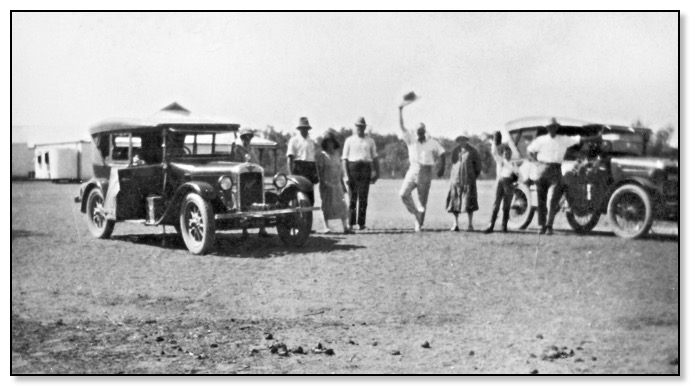
The Austin about to leave Paldue
The next couple of days were largely uneventful and they pressed on through Frazer Downs, Hammock Plains, Naligine, Wallal and on to Paldue where they stayed the night with a Mr. and Mrs. Thompson, and a Captain Mitchell.
On leaving Paldue, they travelled on to Marble Bar, Nulligine, and Ethel Creek (Newman). Where Ellen records they obtained some birds!
By the Saturday 19th November they had reached Meekatharare, where they were able to collect their mail, and then carried on to Mount Magnet in the company of Mr. & Mrs. Martin and then stayed the night at a hotel.
By the Tuesday 22nd November) they had arrived at Norcia, and Ellen recorded that she was feeling very unwell. They arrived at Perth the following day, where a doctor was called to examine her. The doctor (Dr. Heyword) ordered her to go to hospital. Ellen spent the next seven days in St, John of God Hospital, but we are not told what was wrong with her. She eventually came out of hospital on Thursday 1st December. Here Mr. & Mrs Martin left them and boarded the Transcontinental train for Adelaide.
On Saturday 3rd December Ellen went back to see Dr. Heywood to pay her bill and also to obtain a tonic, then left Perth for Kalgoolie which they reached on Tuesday 6th December, and booked into the Railway Hotel until the following Sunday.
On leaving Kalgoolie they headed for Port Augusta, where they stayed for a couple of days, then packed the Austin up in readiness for their journey to Adelaide, which they reached in the afternoon of Thursday 15th.
The final entries in Ellen’s diary were sparse, and probably reflected the fatigue which they both must have experienced after making such an epic journey.
The final entries read thus:
Friday 16th “Got to (no place name given – Probably Hamilton), camped the night, Mosquitoes very bad”.
Saturday 17th. “Left and got near Gelong”.
Sunday 18th. “Got to Melbourne, stayed at the Entwistles for dinner, left in afternoon for Wagga”.
Monday 19th. “Got to Mangoplah about 4 o’clock – Wagga 6.30”.
Tuesday 20th. “Stayed in Wagga at Elsie’s place”.
Wednesday 21st. “Left for Sydney”.
Thursday 22nd. “Got to Sydney”.
And thus ended a truly epic tour of Australia, in an Austin Twelve, travelling somewhere in the region of 10,000 miles in an anti-clockwise direction, over some of the most unforgiving terrain consisting of unmade roads and precipitous mountain tracks and flooded rivers. They encountered some of the most extreme driving and weather conditions known to man. The car, an Austin, only required some minor repairs throughout the entire trip, which Fred was able to undertake at the road side, but it came through with flying colours proving that it was a truly dependable motor car. Why they did it? We shall probably never know. They were certainly not the first, and probably not the last to circumnavigate the continent of Australia.
___________________
I am indebted to Jennifer Hanson for allowing us to share her Great Grandparent’s amazing journeys, and for supplying the photographs and copies of the diaries which Ellen kept, covering both the tours and from which this article has been drafted and illustrated.
Jim Stringer

